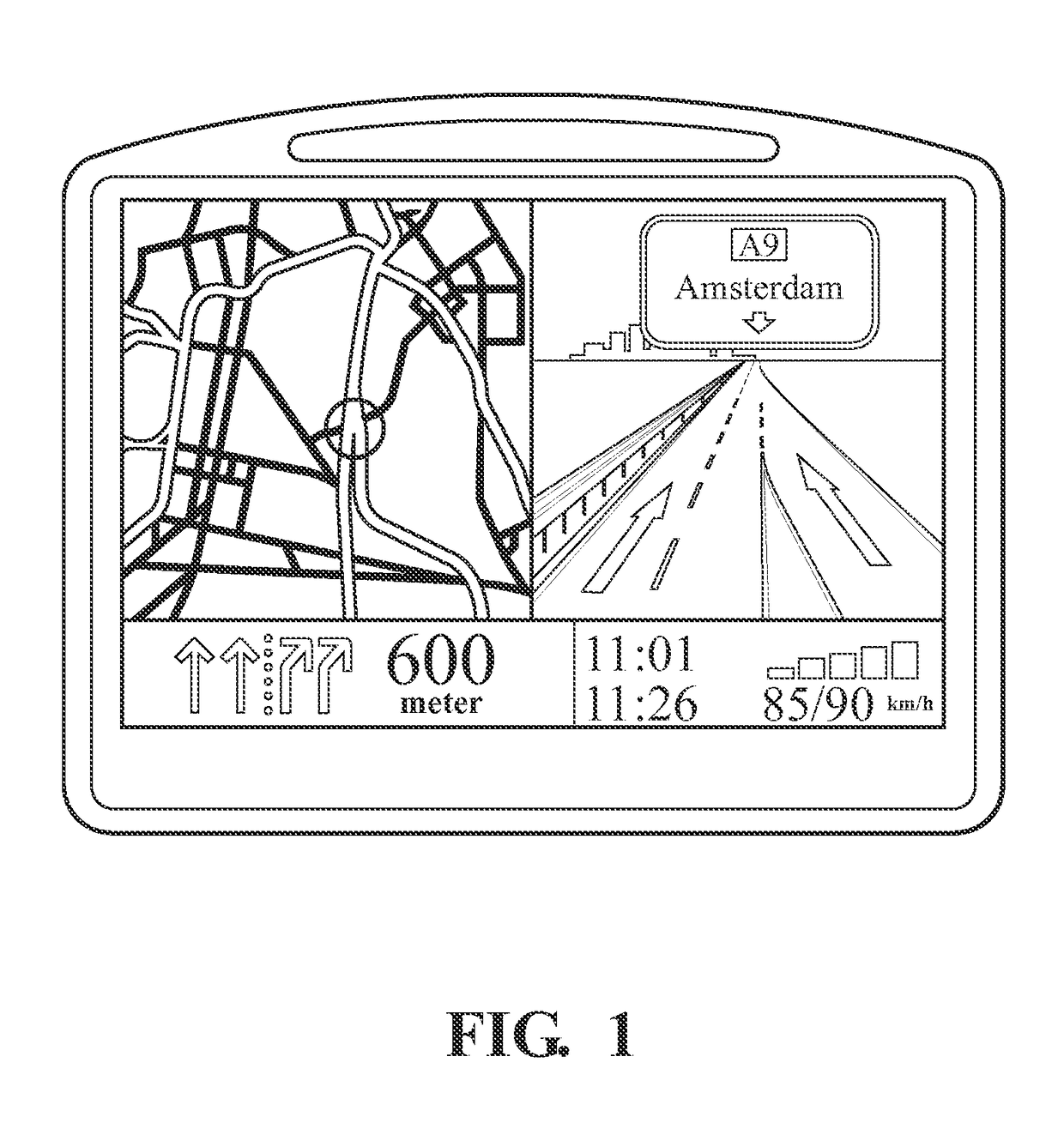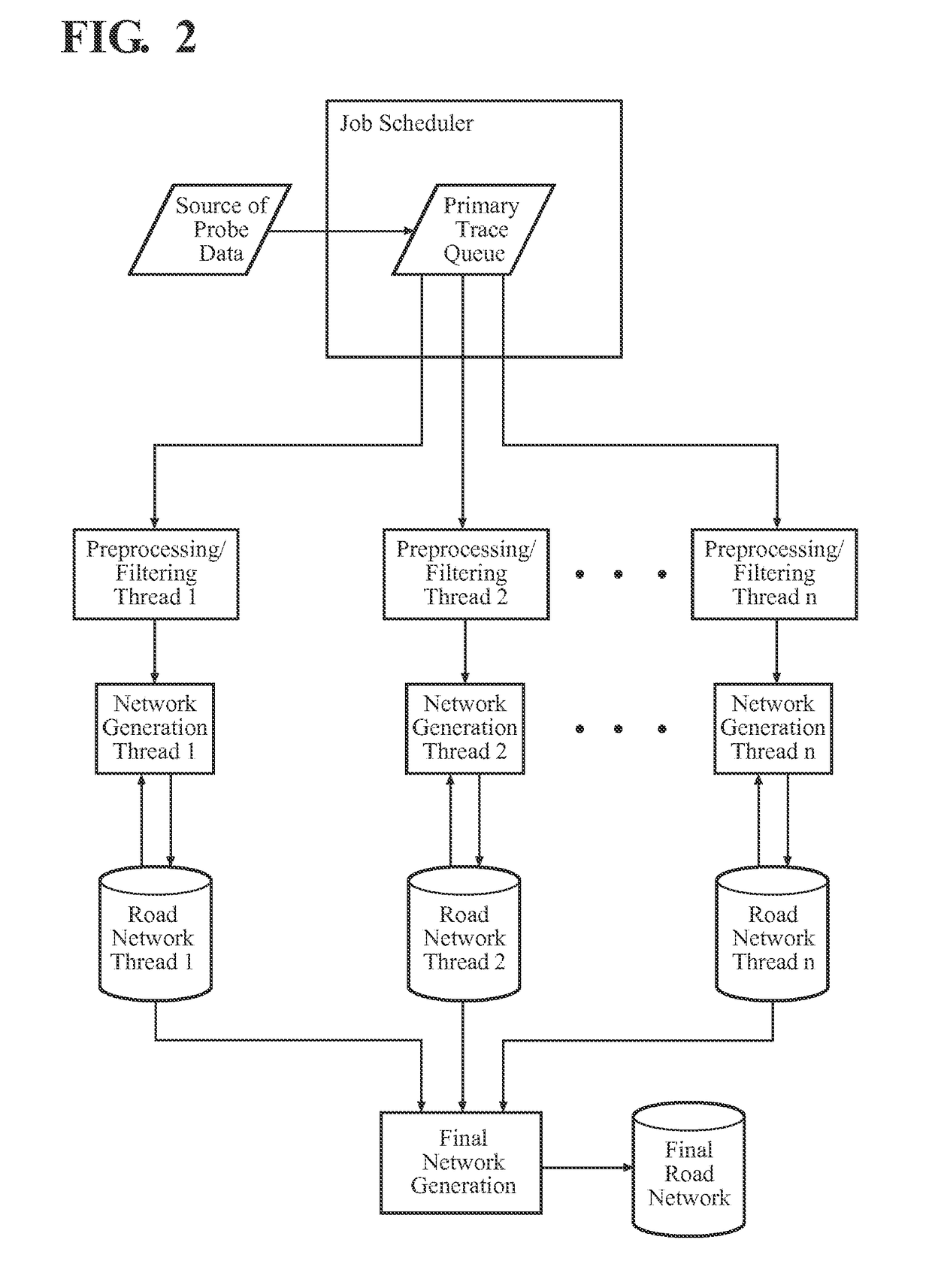Seamless network generation
a network generation and seaming technology, applied in the field of digital maps, can solve the problems of inability to accurately portray current conditions, inability to generate, extend, and revise digital maps, and inability to accurately represent current conditions, etc., to achieve efficient generation and update the network, avoid errors associated with seaming steps, and save resources
- Summary
- Abstract
- Description
- Claims
- Application Information
AI Technical Summary
Benefits of technology
Problems solved by technology
Method used
Image
Examples
Embodiment Construction
[0032]Referring to the Figures, a system and method for generating a seamless network, such as a road network, of a geographical area for use in a digital map is generally shown. A plurality of probe traces, preferably GPS traces from probe data, extend across the geographical area, and a plurality of threads employ the traces. Each of the threads can employ one of the traces while another one of the treads employs another one of the traces to cooperatively generate a single, accurate seamless network of the geographical area.
[0033]The term “generating” used throughout the subject application, includes generating as well as revising and extending the network. The inventive system and method can generate the seamless network of a large geographical area, without using the error susceptible seaming step of the prior art.
[0034]An exemplary digital map of the system is shown in FIG. 1. The digital map of FIG. 1 is included in a compact, portable vehicle navigation device. Alternatively,...
PUM
 Login to View More
Login to View More Abstract
Description
Claims
Application Information
 Login to View More
Login to View More - R&D
- Intellectual Property
- Life Sciences
- Materials
- Tech Scout
- Unparalleled Data Quality
- Higher Quality Content
- 60% Fewer Hallucinations
Browse by: Latest US Patents, China's latest patents, Technical Efficacy Thesaurus, Application Domain, Technology Topic, Popular Technical Reports.
© 2025 PatSnap. All rights reserved.Legal|Privacy policy|Modern Slavery Act Transparency Statement|Sitemap|About US| Contact US: help@patsnap.com



